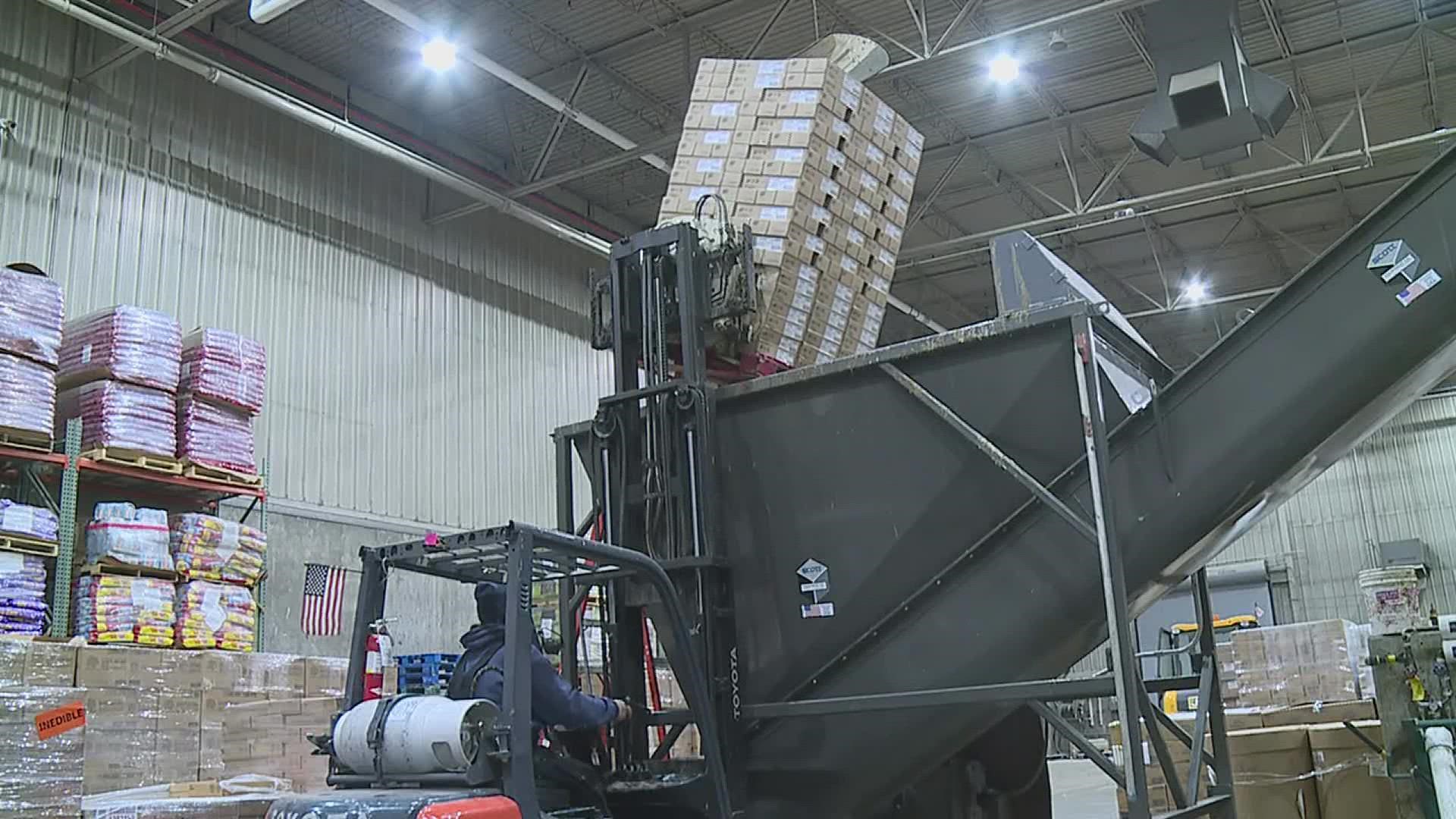MUSCATINE, Iowa — The Muscatine Organic Recycling Center has only been in operation since May 2020, but the impact it's already had on both landfills and methane emissions is garnering national attention.
It's a program unlike any other. There are currently only three such organic recycling stations in the U.S., and MORC is the only one in the Midwest.
The idea is to take in packaged food waste, unpackage it, send the wrapping to the landfill and turn the food waste into fertilizer and energy. Essentially, the center transforms table scraps and expired or damaged food waste into 'liquid gold.'
"It's a great success," Jon Koch, director of the Water and Resource Recovery Facility for Muscatine, said. He also heads up the MORC and said the facility receives organic food waste from across the country, even as far away as Tennessee.
Regionally, the center hopes to become a hub for such activity.
"We do about 30-40 tons of food waste a day. So that's what would be going into the landfills if we didn't do what we were doing," said Koch. When food sits in a landfill it degrades and produces methane, a potent greenhouse gas. "Most of this food is inedible. That means something went wrong in the manufacturing process or it sat around for too long, so we can't donate this food either."
Koch said the program has been running well and is even producing "a lot" more gas than what designers thought possible.
"We're now able to say, 'Hey, we can get an energy program going where we're making our own renewable energy right here at the wastewater plant, instead of consuming so much energy,'" said Koch.
Capital costs for the center's initial phase were $3 million. However, Koch said that won't impact residents in Muscatine. The MORC charges a $40 per-ton tipping fee for large waste drop-offs. From the generated revenue, he expects the entire facility to pay for itself by about 2025.
Looking forward, Koch has big plans for expansion. He'd like to see daily waste intakes increase up to 90 tons each day. With the larger volume, the generated gases could be converted into compressed natural gas and potentially put back into pipelines. And eventually, Koch would like to explore microgrid technology and the potential of becoming an electrical-energy producer.
It's a one-of-a-kind process that's gaining outside attention.
In 2021, the American Council of Engineering Companies of Iowa awarded the center, along with its prime consultant and engineering firm, Stanley Consultants, Grand Prize along with the Grand Conceptor Award in the water or wastewater category. Additionally, it was named one of the top ten Grand Award projects in the country.
The award follows came after the 2020 win of Grand Prize in the water and wastewater category as well as the overall Grand Conceptor award for the program's design.
Inside the MORC, which ironically lives inside a repurposed recycling center, is a giant T-42 Turbo Separator. The Minnesota-made machine is the only domestically-produced apparatus of its kind in the country, according to program leaders.
Boxes of food are forklifted up and into its basket, where they are squished and moved via augers into another machine. There, spinning paddles work together with centrifugal force to whirl the food out of the packaging.
It's estimated about 99% of that food then drops out the bottom of the machine before being whisked away through tubes and out to a waiting tanker. The waste is then brought over to two large 'digesters,' where it joins other municipal waste.
The two mixers have large, floating covers that bob up and down with the building methane inside. Combined, they have a nearly 1-million-gallon capacity and are filled with essential bacteria.
From there Koch said it's almost like feeding a person.
"It's like your gut," he said. "This is the same kind of bacteria in your guts as is in the digesters here. So it further breaks down that food and then it creates methane."
The leftover product is a fertilizer that the program land applies on farmland near the MORC. According to project leaders, nearly 6 million gallons of the fertilizer are made each year from a combination of municipal waste and the organic food waste.
Meanwhile, the remaining methane is burned, turning it into carbon dioxide.
"Methane gas is about 20 times more potent as a greenhouse gas than carbon dioxide is," said Koch. "So we have to burn that off before it goes off into the atmosphere."
And while most of the waste is generated from large manufacturers, the public is invited to participate as well. Outside the entrance to the center, located at 1000 South Houser Street in Muscatine, is a large orange dumpster. Food items may be placed inside, for free, though MORC does ask that it be wrapped in packaging or a plastic bag.
Acceptable items for dumping include produce, bakery, frozen foods, canned goods, dry goods, dairy and alcohol.
The MORC does ask that visitors refrain from dumping other forms of waste, including glass, cardboard boxes, paper towels, garden waste, pet waste, animal bones, leather products and more.
You can find a full list of unacceptable and accepted items here.

